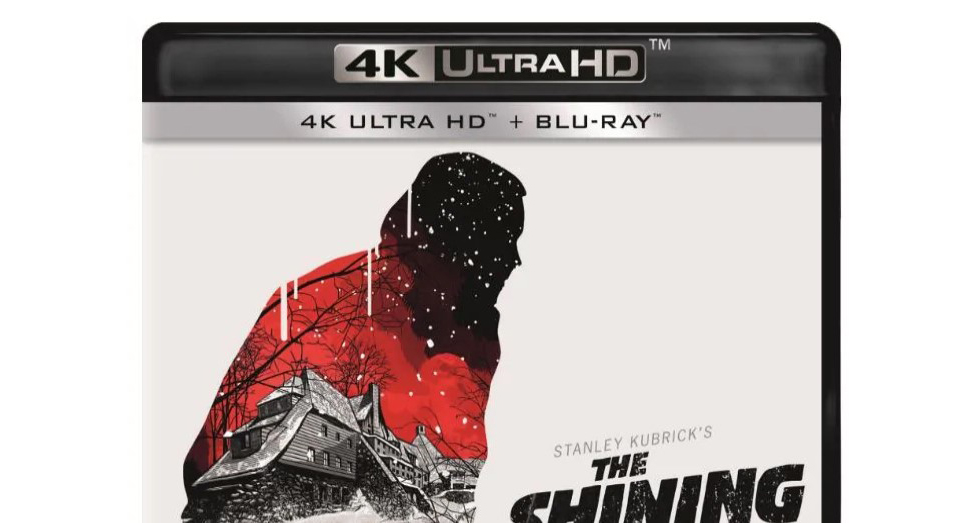TL;DR
Discover why *The Shining* remains an enduring masterpiece, even decades later! This blog dives deep into Kubrick's meticulous, and at times demanding, filmmaking process that birthed iconic scenes and performances. From the psychological terror of isolation to the nuances revealed with each rewatch, the film offers a consistently rewarding experience. The new Ultra HD 4K release is praised for its stunning restoration and impressive supplemental content, making it a must-have for fans and newcomers alike. Get the full scoop on why this edition is essential for your collection!
As mentioned in my review of Ready Player One, the scene featuring The Overlook Hotel stands out as a highlight. The Shining possesses a captivating quality, and Steven Spielberg acknowledges this inherent watchability in one of the insightful documentaries included with this exceptional Ultra HD edition.
Jack (Jack Nicholson), a writer with a troubled disposition, accepts a position as the winter caretaker of the sprawling The Overlook Hotel, nestled in the remote mountains of the Northern USA. The inherent challenge lies in the isolation that he and his family will endure throughout the winter months, a circumstance that ultimately leads to dire consequences.
The more recent Doctor Sleep revisits The Overlook Hotel and introduces us to an adult Danny. While I haven’t personally viewed Doctor Sleep, I understand it faces a considerable challenge in living up to the enduring impact of director Stanley Kubrick’s seminal work, The Shining. Upon revisiting the film for perhaps the twenty-fifth time, I continue to discover new nuances. The film’s impact evolves alongside the viewer’s own experiences. Initially, one might focus on the overt horror elements, while later viewings may highlight the family drama or the psychological effects of isolation. The film offers a consistently rewarding and multifaceted experience.
Stanley Kubrick is renowned for his meticulous approach to filmmaking, often employing numerous takes. The Shining famously holds the record for the most takes of a single sequence (exceeding 127 for the scene where Shelly Duvall retreats up the stairs with a baseball bat). Scatman Crothers reportedly endured nearly 60 takes for a static scene at the kitchen table during the film’s opening. Kubrick’s rationale stemmed from his preference for capturing rehearsals on film, eschewing traditional rehearsal methods. He believed that extensive pre-production planning negated the need for rushed execution during filming. However, Stanley Kubrick’s demanding directorial style reportedly contributed to Shelley Duvall’s enduring anxiety following the production of The Shining. Nevertheless, his methods yielded exceptional results, as the film remains remarkably relevant and impactful nearly four decades after its initial release.
The Shining has been previously released on VHS, DVD, Blu-ray, and via digital distribution. Now, it makes its debut on Ultra HD in 4K, offering an unparalleled viewing experience. The picture quality is outstanding, meticulously restored while preserving the integrity of the original film. The restoration avoids heavy-handed color correction, presenting a clean and authentic visual presentation. The sound design is equally impressive, delivering a balanced and immersive audio experience. The absence of a Dolby Atmos track is understandable, given the film’s age and the fact that it was originally released without surround sound. Kubrick historically favored mono sound for his films, expressing skepticism towards newer audio formats.
This 4K edition of The Shining excels in its supplemental content. Warner Bros. has invested significantly in providing a wealth of valuable extras, including several insightful documentaries (notably the one directed by Kubrick’s daughter) and a highly informative commentary track, which provides considerable depth for enthusiasts.
In conclusion, this release is highly recommended for both newcomers and seasoned viewers who, like myself, have experienced the film numerous times. Even Stephen King, who has publicly expressed his reservations regarding Kubrick’s adaptation, might appreciate the visual fidelity of The Shining on UHD. This is an essential addition to any film collection.

